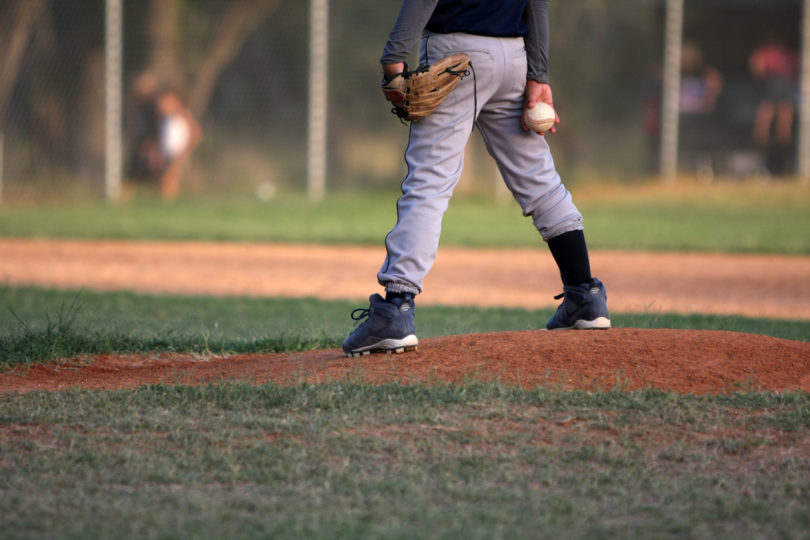For a baseball pitcher, the arm is gold. But the pitching arm is also susceptible to overuse injuries. Once, a serious injury to the elbow or shoulder was career-ending for a baseball player. That changed in the 1970s after the emergence of Tommy John surgery—a ligament replacement procedure named for the former major league pitcher.
The surgery changed the game for pitchers. After surgery and rehabilitation, players could return to the field—some seemingly stronger than before. John pitched for 14 more seasons after his surgery before he retired.
But the surgeries have been on the rise. In 2014, more pitchers had the surgery than in all of the 1990s. It’s estimated that 25 percent of active major league pitchers, and 15 percent of current minor league pitchers, have had Tommy John surgery.
“The numbers are getting ridiculous,” says Dr. Martin Coleman, an orthopedic surgeon at the Orthopaedic & Spine Center in Newport News, Virginia. “It’s being done in younger and younger throwers.”
The news is distressing to those in the medical field, who say elbow injuries leading to the surgery can and should be prevented. Arm overuse has become a big issue in the baseball world, even among young players.
The youngest player Dr. Nick Sablan, an orthopedic surgeon with Tidewater Orthopaedic Associates, has done a Tommy John surgery on is 17. But he’s heard of 14- and 15-year-olds getting the procedure.
Doctors believe that the increase in surgeries is in no small part linked to the ongoing trend of year-round baseball in youth. Young pitchers who pitch year-round and don’t rest their arms are three times more likely to incur a serious pitching arm injury, according to the American Sports Medicine Institute. And the injuries might not come until later.
“In many cases, the injury leading to Tommy John surgery in today’s young pro pitchers actually began while they were adolescent amateurs,” the ASMI said last year in addressing what they called an “epidemic rise” in surgery.
Many players who make it to the college level are “baseball-only guys,” says Brian Murphy, the head baseball coach at The College of William & Mary. They may not be as well-rounded as multi-sport athletes, but they are excellent pitchers. But wear and tear is usually already evident.
The ligament in question is the ulnar collateral ligament (UCL), a small ligament located on the inside of the elbow. When a player pitches, rotational force puts stress on the UCL. Over time, it can tear. Tommy John surgery uses a ligament from another part of the body to replace the torn one.
At the Little League level, kids haven’t gone through puberty yet, so they don’t have as much strength as adults. The growth plates are still open, leaving the joints and ligaments susceptible to injury, says Sablan, who consults for college and high school baseball teams in Hampton Roads.
There is, however, hope. It comes through prevention and education, Sablan says. Proper training, conditioning and resting—all play a part in keeping the arm in shape. For players at all levels, there are guidelines for how many pitches can be thrown a week, depending on age.
In 2013, the Virginia High School League adopted new, more-stringent pitching regulations for youth baseball players. Little League has had pitching guidelines and counts in place since 2006, according to Chris Downs, spokesman for Pennsylvania-based Little League International.
Youth baseball players are advised to take at least two months off per year, with no overhead pitching for three months a year.
“Little League continues to stress the need to put the ball down,” Downs says. “Pitching a baseball too much has been proven to be physically detrimental to young players.”
Steve Howell, a physical therapist and partner at Tidewater Physical Therapy Inc., which has locations in Hampton Roads and
the Richmond area, says he sees a fair number of Little Leaguers and high school students with pitching arm injuries. With strengthening and conditioning, as well as adherence to recovery time, surgery can often be avoided, says Howell.
The baseball community seems to be getting better educated, Howell says, and there are programs to help make sure players are pitching the correct way. Coaches, parents and the general public are gaining better understanding that every child’s arm has a limited number of pitches it is capable of throwing, adds the Little League’s Downs.
Parents need to advocate for their children, know when to say no to a coach or manager and make sure their players are using proper baseball mechanics. If a player has talent, health and a love for the game, Downs says, high school coaches and college and pro scouts will find him.
“We still have the overzealous parent who has their kid doing the same sport year-round—those are the ones most at risk,” Howell says. “We’ve got to keep these kids healthy for the future of the game.”
How to reduce the risk of pitching arm injuries
- Optimize pitching mechanics to ensure the proper form is being used.
- Vary speeds for pitch types.
- Be watchful of fatigue on the mound.
- Be wary of pitching in winter league baseball.
- Do less full-effort pitching and more practice throwing, playing other positions and playing other sports.
- Ensure proper exercise, rest and nutrition.
- Youth baseball players (under 18) should take at least two months off per year.
- Players ages 7-8 should throw no more than 50 pitches a day; ages 9-10, no more than 75 pitches; ages 11-12, 85; ages 13-16, 95; and ages 17-18, no more than 105.
- Observe rest days based on number of pitches.

